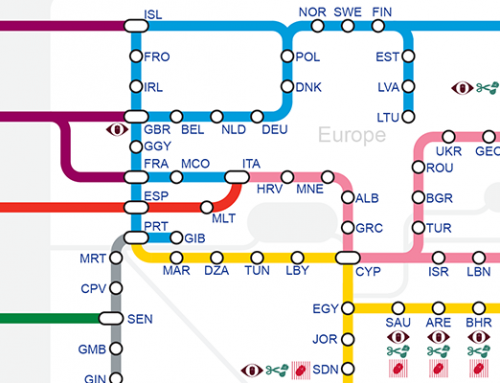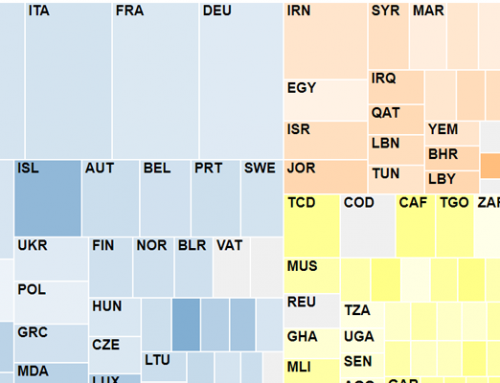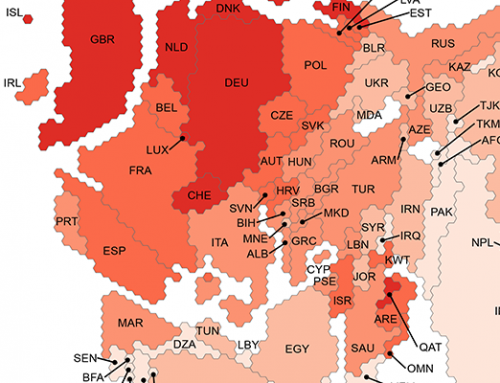(Click to see full image)
The map shows percentage of Internet users in local authority districts (LADs) in England, Wales and Scotland based on a statistical tool called Small Area Estimation. Darker shading indicates higher Internet use.
Data
We used two primary datasets: The 2013 Oxford Internet Survey (OxIS), and the 2011 UK national census.
The Oxford Internet Survey (OxIS), collects data on British Internet users and non-users. Conducted biennially since 2003, the surveys are random samples of more than 2,000 individuals aged 14 and older in England, Scotland, and Wales. Interviews are conducted face-to-face by an independent survey research company. Among its more than 550 variables, OxIS contains measures of a host of fine-grained Internet uses and content production.
National Census data are constructed on a fundamental administrative element, the Output Areas (OAs). They are the smallest geographical area for which the British 2011 census reports data. Even though Scotland conducts a separate census, two different censuses are coordinates so that the questionnaires are similar, the enumeration is on the same day, and the reporting is similar. In total, England, Wales and Scotland count 227,759 Output Areas.
Findings
The Internet has fundamentally reorganized economic, social and political actions and relationships around the world. It has sparked what has been dubbed as an “information revolution,” and given rise to an “information economy” and “information society.” An unimaginable amount of content can now be accessed from almost anywhere on the planet: content that ultimately shapes our understandings of the world and the ways in which we interact with our surroundings. Social life is increasingly mediated, influenced, and augmented by online interactions that take place through the Internet.
Despite the importance of the Internet in everyday life, we know surprisingly little about the geography of Internet use and participation at sub-national scales. It is unclear whether citizens of Aberdeen, Manchester, Cardiff, or London are significantly more likely to be able to access our global network.
The three darkest shades show that the highest Internet use in concentrated in the South; London particularly stands out.
Internet use in the darkest areas has reached 88-89% in London plus Reading to the west of London and Leicester. The LADs with 84-87% of use stretch in a ‘C’-shaped band anchored in London and sweeping west and north. Bristol, Southampton, and Nottingham also have high levels of use. The rest of the south, interestingly including Cornwall, has above average usage levels of 78-83%. Leeds, York and Manchester are also in this category.
Below average use, 75-77%, is concentrated mainly in two blocks: one surrounds southern England, covering East of England, along the Welsh border, and in the Midlands surrounding Leeds, York and Manchester; the other block is in Scotland, in the belt between Glasgow and Edinburgh and up to Dundee and surrounding Aberdeen.
Wales is composed of both of the two lower categories: 59-70% and 71-74%, with the exception of Cardiff. The lowest category, 59-70%, encompasses the entire North East region.




